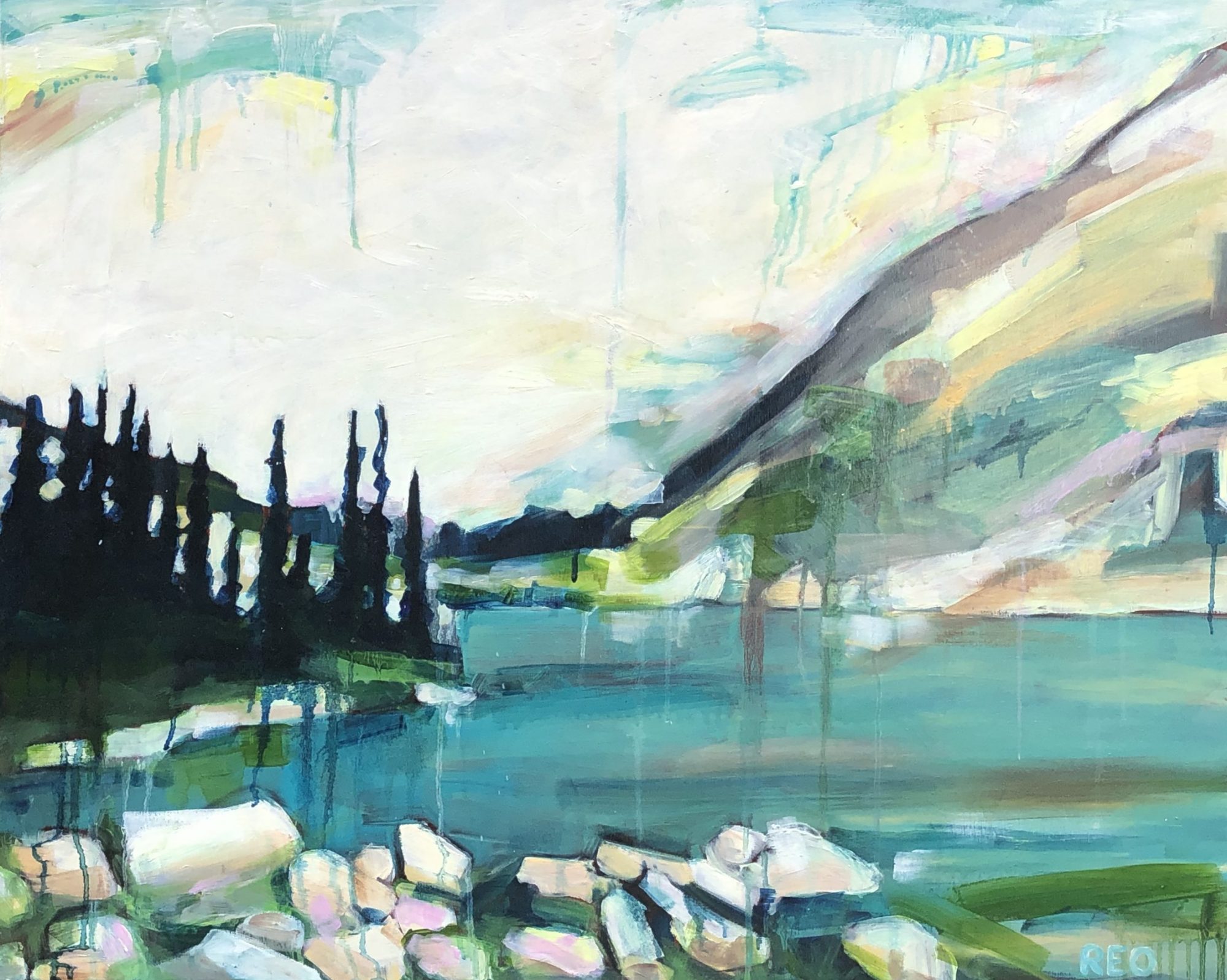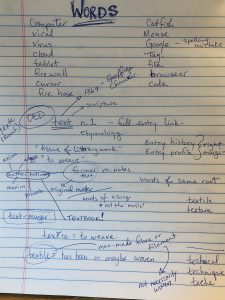For this assignment, I decided to try the dictation app that is embedded in Microsoft Office 365. I use voice to text when giving students feedback on their artwork every week by using an iPad in my classroom. When doing this, I usually speak slower and voice my punctuation. For this exercise, today, I opted to simply tell the story and not watch the screen as I spoke. I know that this slows me down at work, but that I need to catch and fix all of the errors.
Here is what I have:
One of the strangest things about this assignment is how long it has taken me to decide what to talk about I’ve gone back and forth for days and it has to do with how permanent it is when you put something into writing I think I was thinking that whatever story I decided to tell for the next few minutes needed to be important enough to be written or funny or entertaining and finally I just went back to at one point in one of the readings the the idea that a picture is worth 1000 words so that’s why I decided to start I have gone back through some of my photos and decided on this one cute little photo that I came across of my daughter how my took it three years ago now so she’s six at the moment and she was three when I took this picture and we had gone down to a little pond locali here down near the lake and it stocked every year with these little fish little trout minnows and the kids love just to throw some bits of cracker and bread into the pond and the fish eat it there’s some turtles that come over anwyl Neville on the bread as well it’s just a very cute place to take kids and it’s fun for them and we were down there this one day and we had her little bucket and a net so as the fish were coming and eating all the little bits of cracker that she was throwing in she was catching a few fish and taking them from the net and putting them into the bucket and having a lot of fun and looking at the fish and then we’re getting close to the time where we have to put the fish back in the pond ’cause we had to leave and she was feeling kind of sad about having to put the fish back because she had three of these little fish in her bucket so I showed her about how to have you could pick one up and then put it back in the lake and of course what does she start doing but as she picks up each of these cute little fish she gives it a kiss and then puts it back into the pond so I when she went to do the last fish from her bucket and I by then had gotten out my phone and use the camera to get a little picture and a video of her kissing the fish and going to put it back and then in the in the video it when she went to kiss it to go and put it back she the fish slipped out of her hands and went back into the bucket and she giggled and said something about how does such a wiggly little one and then I did get a photo of her kissing the fish after she caught it again in the bucket and was going to put it into the lake so it was just this really cute thing that she was doing where she didn’t even think about how stinky the fish were or how bad or hands smelt later and that she just needed to kiss each fish before she sent it on its way and now I’m wondering if she would consider kissing a fish so perhaps this afternoon when I’m done my homework I could take her down to the pond with some crackers and maybe we’ll catch some fish for her bucket and I’ll see if she has any interest in kissing them like she used to.
____________________________________________________________
In doing this exercise, I am not surprised about it being a jumbled mess of a run-on sentence. In reading and re-reading it, I find that I am still hearing my voice say the words and, because they are my words, I am mentally pausing at all of the appropriate places that punctuation would go. I don’t really see any of this passage as being ‘wrong’ or ‘right’ as I went into it expecting to get a very flawed piece of writing. There are fewer errors than I get with the iPad dictations that I do at work. I suspect that MS Office is more accurately predictive in choosing ‘witch’ ???? words I am using based upon the context of the words surrounding them. The mistakes, besides the glaring lack of punctuation, are mostly a result of my poor enunciation of words, for example the word ‘her’ is typed as ‘or’ and I must have mumbled the, “…and nibbled on the bread,”as it reads, “…anwyl Neville on the bread.”
I see also that my talking was repetitive, especially when I added details to clarify or describe. I find it much slower to read my words without the punctuation and am looking forward to seeing how this exercise has gone for some of my peers. All of my pauses are not recorded, so this seems much quicker than the five minutes that I took to record the story. It is the lack of space between the words that bothers me the most, and it is not just the space for breathing that is created by a comma or period. I am quite aware of the power of a pause in Storytelling and understand how much meaning can be lost by removing inflection, tone and space from the words. In removing the orator (myself) from the story, you cannot tell where I smiled or giggled.
Any public speaking that I have done has been scripted. I feel the need to write the words and practice what I want to say in order to get my thoughts straight. I draw calmness and comfort from this practice time and scripting ; public speaking is not fun for me and dictating the above story to post for this course gave me a similar kind of unease. I had not practiced and was oddly nervous and fidgety. I understand better how a storyteller will improve in years of telling the same stories. In seeing the reactions and adding inflection and emotion to their words. In oral storytelling, the orator or author is as important as the message. In a written story, the writer may be so far removed from the words that the reader is free to create their own meanings and add their own inflections and biases. I do not see that simply recording the words of a story will preserve all of the intended meaning. This concept is one that we discussed at length in ETEC 521 – Indigeneity, Technology & Education.
__________________________________________________________________
Notes for the future…
“Understanding 20th-century literacy means understanding the technologies that support it – since without the technologies, literate acts would be profoundly different.” (p. 17)
Haas, C. (2013). “The Technology Question.” In Writing technology: Studies on the materiality of literacy. Routledge. (pp. 3-23).



